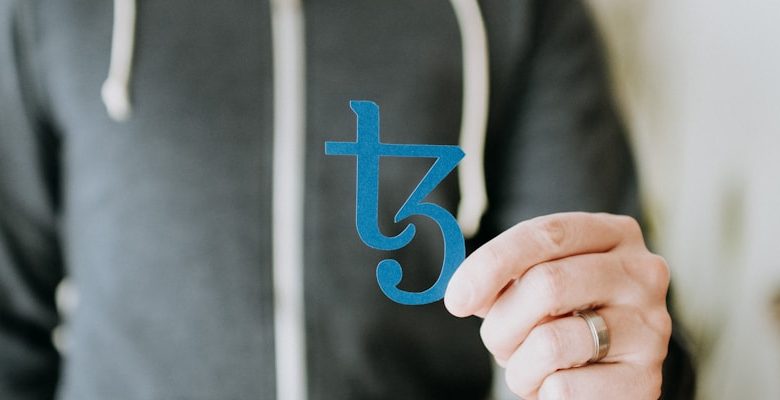The Challenges of Blockchain Scalability and Potential Solutions

- Understanding the Limitations of Blockchain Scalability
- The Impact of Increasing Transaction Volume on Blockchain Networks
- Current Approaches to Addressing Scalability Issues in Blockchain Technology
- Exploring Layer 2 Solutions for Enhancing Blockchain Scalability
- The Role of Sharding in Improving Blockchain Scalability
- Challenges of Implementing Scalability Solutions in Decentralized Networks
Understanding the Limitations of Blockchain Scalability
One of the key challenges facing blockchain technology is scalability. While blockchain offers many benefits, such as decentralization and security, its scalability limitations can hinder its widespread adoption. It is important to understand the limitations of blockchain scalability in order to address them effectively.
One of the main limitations of blockchain scalability is the issue of transaction speed. As the number of transactions on a blockchain network increases, the time it takes to process each transaction also increases. This can lead to delays and increased transaction costs, making blockchain less efficient for high-volume applications.
Another limitation of blockchain scalability is the size of the blockchain itself. As more data is added to the blockchain, the size of the blockchain grows, which can make it difficult for nodes to store and process the entire blockchain. This can slow down the network and make it less efficient for users.
Additionally, the consensus mechanism used in blockchain technology can also impact scalability. Some consensus mechanisms, such as proof of work, require a significant amount of computational power to validate transactions. This can limit the number of transactions that can be processed simultaneously, further hindering scalability.
In order to address these limitations and improve blockchain scalability, developers are exploring potential solutions such as sharding, off-chain payment channels, and consensus protocol enhancements. By implementing these solutions, blockchain technology can become more scalable and efficient, paving the way for its broader adoption in various industries.
The Impact of Increasing Transaction Volume on Blockchain Networks
As blockchain technology becomes more widely adopted, the issue of scalability has become increasingly prevalent. One of the key challenges facing blockchain networks is the impact of an increasing transaction volume on their ability to process transactions efficiently.
When transaction volume on a blockchain network grows, it can lead to congestion and slower processing times. This can result in higher transaction fees and delays in transaction confirmation, which can be frustrating for users and limit the potential for widespread adoption of blockchain technology.
Several potential solutions have been proposed to address the scalability challenges posed by increasing transaction volume. One approach is to increase the block size, allowing more transactions to be processed in each block. However, this can lead to centralization and reduce the security of the network.
Another solution is to implement off-chain scaling solutions, such as payment channels or sidechains, which allow for faster and more cost-effective transactions by moving some transactions off the main blockchain. These solutions can help alleviate congestion on the main blockchain and improve overall network scalability.
Overall, the impact of increasing transaction volume on blockchain networks is a significant challenge that must be addressed in order to realize the full potential of blockchain technology. By implementing innovative scaling solutions, blockchain networks can improve transaction throughput, reduce fees, and enhance the user experience, ultimately driving greater adoption and growth in the blockchain ecosystem.
Current Approaches to Addressing Scalability Issues in Blockchain Technology
Blockchain scalability is a pressing issue in the world of cryptocurrency and decentralized applications. Several approaches have been developed to tackle this challenge and ensure that blockchain technology can handle a growing number of transactions without compromising security or decentralization.
One common approach to improving scalability is through the implementation of off-chain solutions. These solutions involve moving some transactions off the main blockchain to reduce congestion and increase transaction speeds. By utilizing technologies such as payment channels and sidechains, off-chain solutions can significantly increase the throughput of a blockchain network.
Another approach to addressing scalability issues is through the use of sharding. Sharding involves splitting the blockchain network into smaller, more manageable segments called shards. Each shard is responsible for processing a subset of transactions, allowing the network to handle a higher volume of transactions in parallel. This can greatly improve scalability without sacrificing security or decentralization.
Additionally, the implementation of layer 2 solutions such as the Lightning Network can help improve blockchain scalability. Layer 2 solutions work on top of the main blockchain and enable faster and more cost-effective transactions by reducing the burden on the main network. By offloading some transactions to layer 2, blockchain scalability can be significantly enhanced.
Overall, addressing scalability issues in blockchain technology requires a multi-faceted approach that combines off-chain solutions, sharding, and layer 2 solutions. By implementing these strategies, blockchain networks can continue to grow and evolve while remaining secure, decentralized, and efficient.
Exploring Layer 2 Solutions for Enhancing Blockchain Scalability
One approach to addressing the scalability challenges of blockchain technology is exploring layer 2 solutions. These solutions aim to enhance the scalability of blockchain networks by moving some of the transaction processing off-chain, thereby reducing the burden on the main blockchain. By doing so, layer 2 solutions can help increase the transaction throughput and overall performance of blockchain networks.
One popular layer 2 solution is the implementation of payment channels, such as the Lightning Network for Bitcoin or the Raiden Network for Ethereum. These payment channels allow users to conduct off-chain transactions directly with each other, enabling faster and more cost-effective micropayments. This approach helps reduce congestion on the main blockchain while maintaining security and trustlessness.
Another promising layer 2 solution is the use of sidechains, which are separate blockchains that are interoperable with the main blockchain. Sidechains can process transactions independently and then settle the final state on the main blockchain, reducing the overall load on the main network. This approach can significantly improve the scalability of blockchain networks without compromising security or decentralization.
Overall, exploring layer 2 solutions for enhancing blockchain scalability is crucial for the long-term success and adoption of blockchain technology. By implementing off-chain solutions like payment channels and sidechains, blockchain networks can overcome scalability limitations and provide a more efficient and scalable platform for a wide range of applications.
The Role of Sharding in Improving Blockchain Scalability
Sharding is a technique that can significantly enhance the scalability of blockchain networks by dividing the network into smaller segments called “shards.” Each shard is responsible for processing a portion of the transactions, which helps to distribute the workload and increase the overall throughput of the network.
By implementing sharding, blockchain networks can achieve higher transaction processing speeds and improved performance, making them more suitable for applications that require high throughput. This approach also helps to reduce the congestion on the network and minimize the chances of network bottlenecks.
One of the key benefits of sharding is that it allows blockchain networks to scale horizontally, meaning that new nodes can be added to the network without affecting the performance of existing nodes. This can help blockchain networks to accommodate a larger number of users and transactions, making them more scalable and versatile.
Challenges of Implementing Scalability Solutions in Decentralized Networks
Implementing scalability solutions in decentralized networks presents several challenges that need to be addressed to ensure the efficient functioning of blockchain systems. One major obstacle is the issue of network congestion, which can lead to slow transaction processing times and increased fees. Another challenge is the lack of interoperability between different blockchain platforms, making it difficult to scale across multiple networks.
Furthermore, the consensus mechanisms used in decentralized networks, such as Proof of Work (PoW) or Proof of Stake (PoS), can also impact scalability. These mechanisms require all nodes in the network to validate transactions, which can slow down the process as the network grows. Additionally, the size of the blockchain itself can become a scalability issue, as larger blockchains require more storage and processing power.
Moreover, the decentralized nature of blockchain networks can make it challenging to implement changes or upgrades to improve scalability. Since there is no central authority controlling the network, reaching a consensus on proposed changes can be difficult and time-consuming. This lack of governance can hinder the implementation of scalability solutions.



